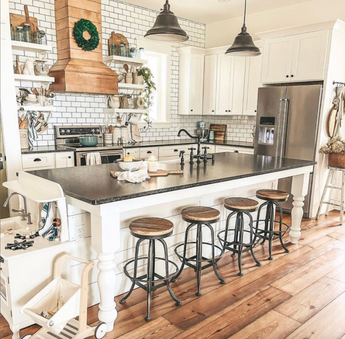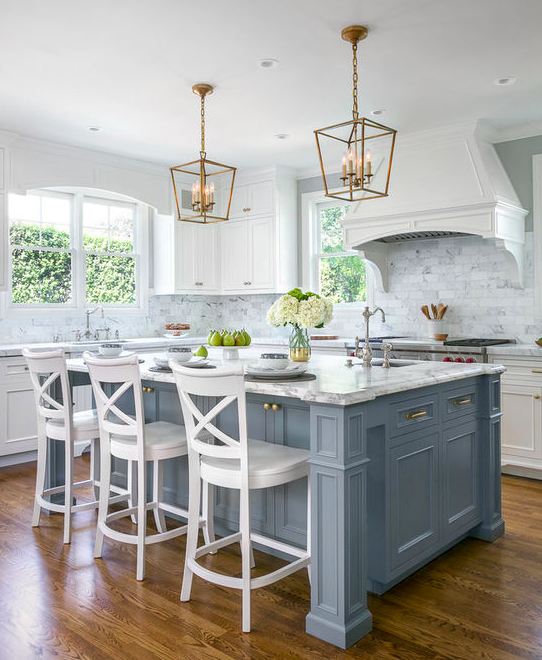Vital Tips for Picking the Perfect Table for Your Kitchen
Picking the ideal eating table for your kitchen area is more than just an issue of taste; it requires a thorough understanding of your room and demands. The shape of the table plays an essential duty; while rectangular tables fit bigger areas, round ones foster intimacy, and extendable options supply adaptability. The table should balance with your cooking area's visual appeals and accommodate your household comfortably.
Step Your Space
Selecting the excellent eating table begins with a meticulous assessment of your available room. This fundamental step makes certain that the table not just fits conveniently within the space yet also matches the general format and capability of your eating area. Begin by measuring the measurements of the space, taking into consideration entrances, windows, and any kind of existing furnishings. This will certainly aid you figure out the maximum allowable size for your dining table.
Think about the circulation of activity around the table. It is important to leave sufficient area for chairs to be drawn out and for individuals to walk around the table without obstruction. A basic general rule is to permit a minimum of 36 inches of clearance from the side of the table to the closest wall surface or piece of furniture. This guarantees simplicity of access and comfort during dishes.
Furthermore, think of the number of individuals you typically amuse and whether you need extra space for visitors. Going with an extendable table can provide flexibility, enabling you to fit differing varieties of diners. By precisely measuring your room, you prepared for choosing an eating table that boosts both the visual appeals and performance of your eating area.
Select the Right Forming

On the various other hand, round tables are outstanding for smaller kitchen areas or intimate gatherings, as they promote discussion by permitting everyone to face each other. They likewise provide a sense of coziness and can fit well in tighter spaces because of their absence of sharp edges. Oblong tables provide the most effective of both globes, incorporating the size of rectangle-shaped tables with the intimacy of round ones, making them functional for different settings.
Square tables are an additional choice, particularly fit for square-shaped rooms. They produce a contemporary and in proportion appearance, fostering an equal eating experience for all seated. However, they might be much less functional for bigger gatherings unless they come with extensions. Inevitably, the form you select need to line up with your room measurements and way of living to guarantee both kind and function.
Product Considerations
When choosing an eating table, product considerations are vital in figuring out the table's sturdiness, upkeep needs, and overall visual. Timber is a classic option, using ageless charm and toughness. Woods like walnut, mahogany, and oak are especially sturdy, though they can be pricey. kitchen island legs. Softwoods, such as pine, are much more budget-friendly however might be prone to scrapes and dents.
Glass-topped tables supply a modern, sleek look and can make a space show up bigger as a result of their openness. Nonetheless, they call for frequent cleansing to avoid finger prints and spots. In addition, tempered glass is advised for its additional stamina and safety.

Lastly, composite materials like MDF (Medium-Density Fiber board) or plywood are budget-friendly alternatives. These materials can imitate the look of solid timber yet might not offer the he said same durability. They are typically easier to clean but can be prone to water damage if not appropriately sealed.
Ultimately, the option of material must align with your kitchen's design, your way of living requires, and your spending plan constraints. (kitchen island legs)
Seats Ability and Convenience
How do you establish the right seating ability and comfort for your eating table? This vital step includes evaluating both the physical space offered in your kitchen and your family's practical needs. Begin by gauging your kitchen area to make sure the table fits easily, enabling at the very least 36 inches of clearance around it for very easy motion. Think about the number of individuals who generally eat with each other, as this will certainly influence the table dimension. For a family members of four, a rectangle-shaped table of 48 inches long or a round table with a 48-inch diameter is typically sufficient.
Convenience is similarly crucial. The elevation of the table ought to ideally be around 30 inches, supplying a well balanced ergonomic position for seated restaurants. Chairs should sit elevation of 18 to 20 inches to make certain a comfy dining posture. Furthermore, take into consideration the chair layout; upholstered seats and helpful backrests can enhance eating comfort dramatically, especially during long term dishes.
Design and Aesthetics
Picking an eating table that suits your style and aesthetics entails stabilizing personal preference with the existing decoration of your eating space. The dining table is often the focal point of the kitchen, and its layout must enhance the total style of the space. Whether your kitchen flaunts a modern-day, minimalist appearance or a rustic, farmhouse charm, the table you select need to integrate with these elements to produce a cohesive and inviting atmosphere.
Consider materials very carefully; wood supplies a timeless allure and can vary from rich mahogany for a typical look to lighter oak for Find Out More a contemporary feel. Steel and glass tables, on the other hand, can present a sleek, industrial side to your cooking area. Don't overlook the table's form-- rectangular tables are traditional and functional, while round and oblong alternatives can foster a more intimate eating experience.
Furthermore, pay attention to information and coatings. go right here A troubled surface may include character and heat, whereas a glossy surface can add to a clean, modern aesthetic. Inevitably, your eating table ought to not just fit seamlessly right into your cooking area's style but additionally show your personal design, boosting the room both functionally and visually.
Conclusion
In verdict, choosing the perfect dining table for a kitchen area necessitates mindful examination of area, shape, material, seating capability, and aesthetic harmony. Inevitably, an appropriate dining table promotes an inviting atmosphere and fits the household easily, therefore boosting the eating experience.

When choosing a dining table, material considerations are paramount in figuring out the table's sturdiness, upkeep requirements, and general visual. For a family members of 4, a rectangle-shaped table of 48 inches long or a round table with a 48-inch diameter is normally adequate.
Don't neglect the table's form-- rectangular tables are traditional and versatile, while round and oval choices can promote a more intimate eating experience. kitchen island legs.